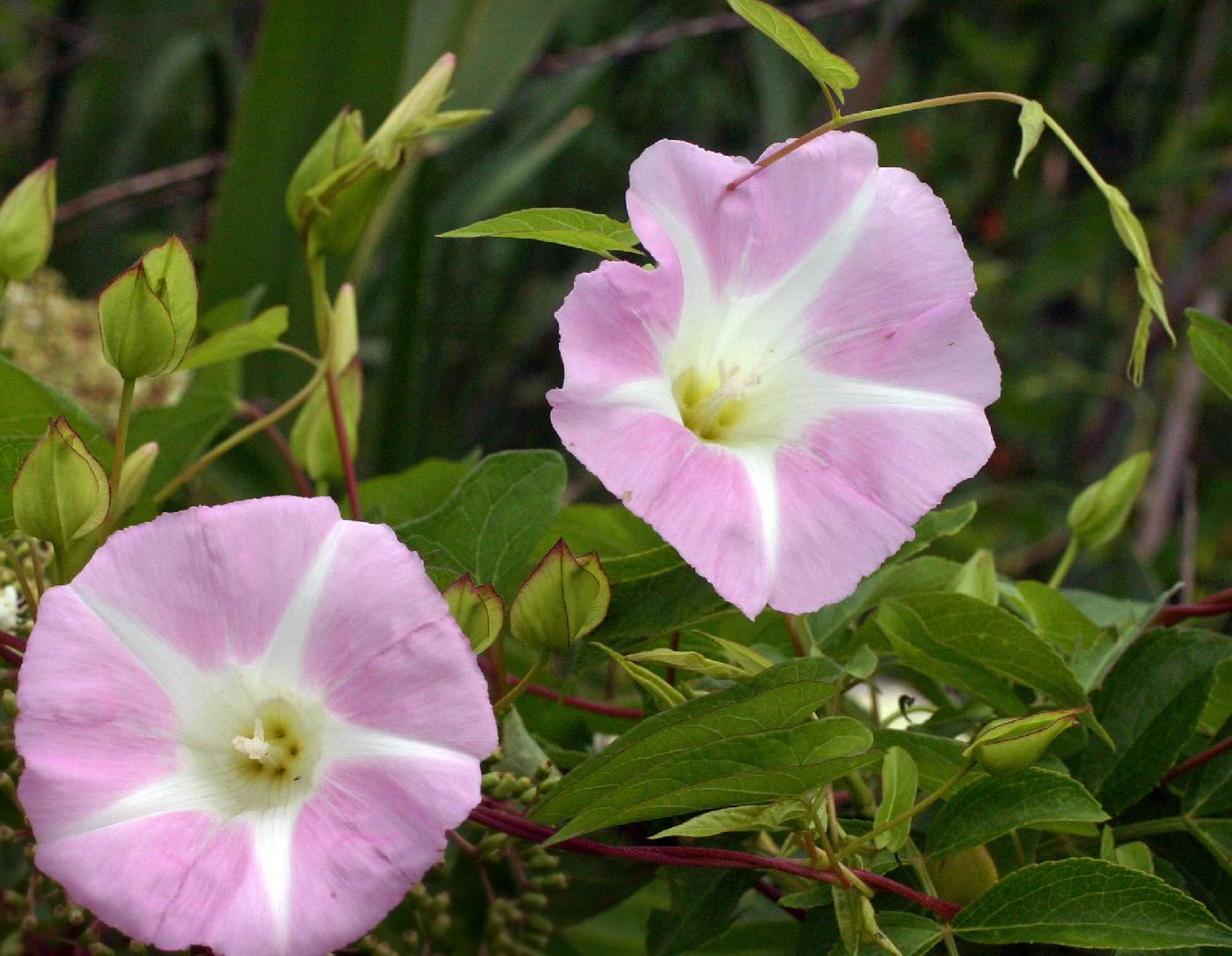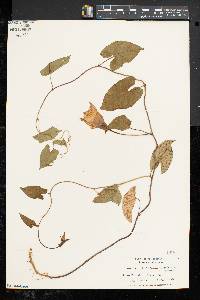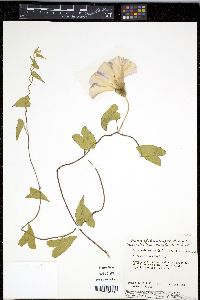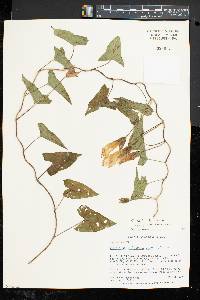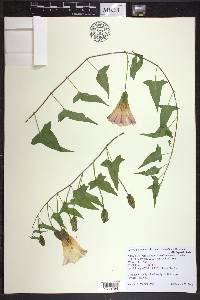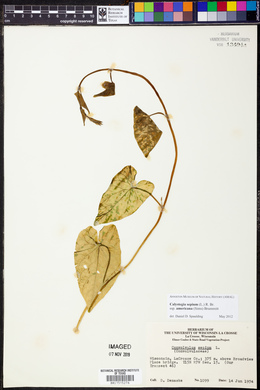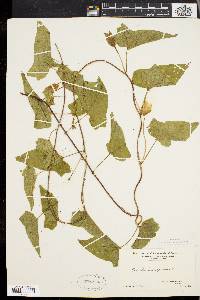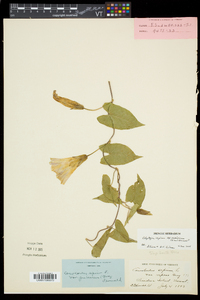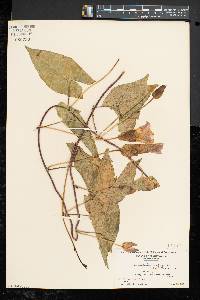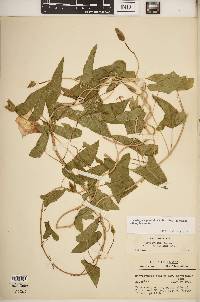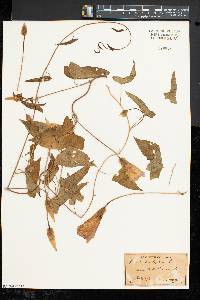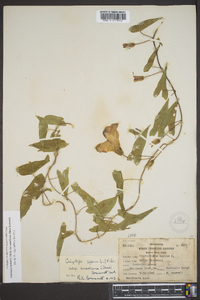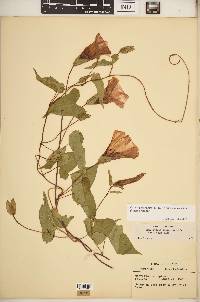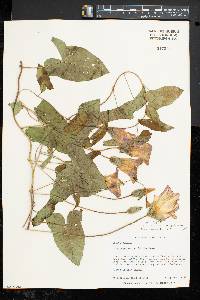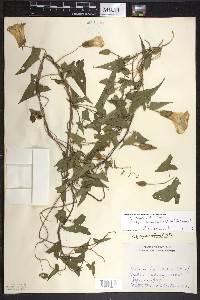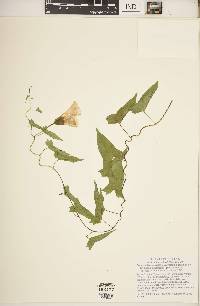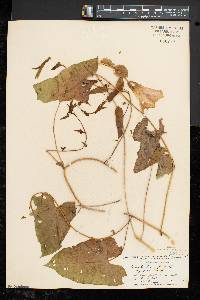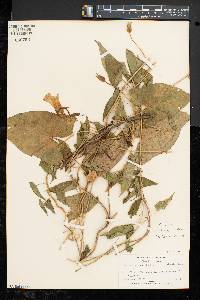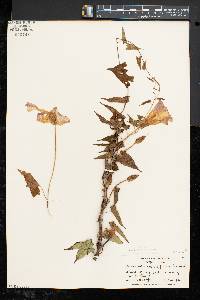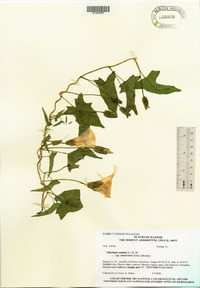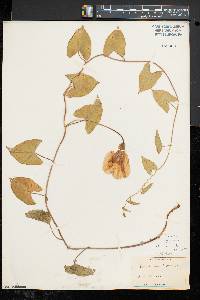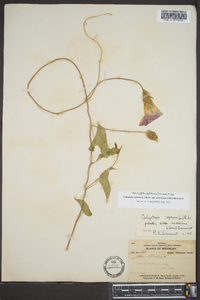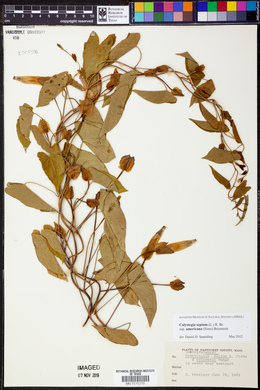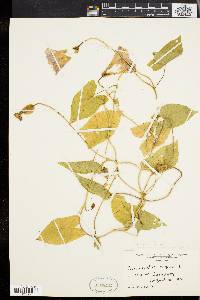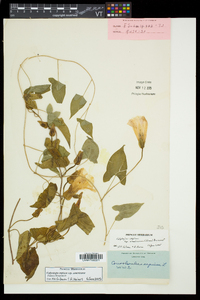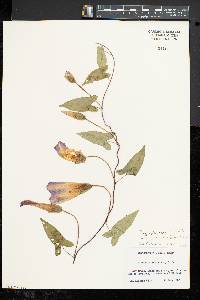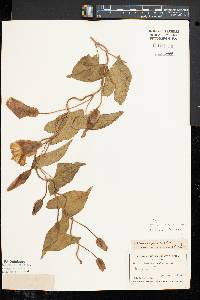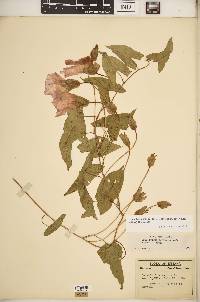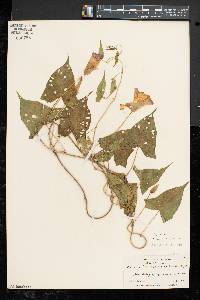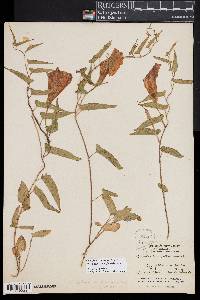
|
|
|
|
Family: Convolvulaceae
Hedge False Bindweed
[Calystegia americana (Sims) Daniels, moreCalystegia sepium var. communis (R. M. Tryon) H. Hara, Convolvulus sepium f. malacophyllus Fernald] |
Perennial vine 1 - 4 m long Stem: strongly twisting, climbing or twining, elongate, usually hairy, and arising from a rhizome. If the stem is cut or broken, it exudes a milky sap. Leaves: alternate, long-stalked (stalks 5 - 15 cm and hairy), non-toothed, usually hairless above, sometimes short-hairy below, 5 - 10 cm long, longer than wide, arrowhead-shaped with a long tapering pointed tip, and two short basal lobes which are slightly curved downward and have a sharp V-shaped notch between them. Flowers: many, singly in leaf axils, long-stalked (stalks hairy and longer than leaf stalk), bright pink, showy, 4.5 - 6.5 cm long, radially symmetric, tubular to funnel-shaped. Each flower is immediately subtended by two, barely overlapping, large (1 - 3 cm long, 1 - 2 cm wide), non-toothed, somewhat egg-shaped, pointed- or somewhat blunt-tipped, and sometimes slightly ridged (keeled) bracts which hide the sepals. Sepals: five, green, egg-shaped to lance-shaped, but usually obscured by larger subtending bracts. Petals: five, but fused into a long tube with expanded to flaring limb, which may be shallowly five-lobed or merely wavy along edges. Stamens: five, attached to inside base of petal tube, then separating for 2.5 - 3.4 cm with 4 - 6 mm long anthers, but not extending beyond petal tube. Pistil: with one, single-chambered, superior ovary; and a single, slender style which ends in two oblong, blunt, and somewhat cylindric stigmas. Fruit: stalked, several-seeded, single-chambered, rounded capsules. Similar species: Calystegia sepium ssp. americana is the most common subspecies of C. sepium in the Chicago Region. It may be confused with C. silvatica ssp. fraterniflora, except that taxon has sharply angled and winged flower stalks that are typically shorter than the leaf stalk, the leaves are hairy on both sides, the bracts are larger and much wider, and the flowers are usually well over 5 cm long. Our other subspecies of C. sepium include a more western taxon, C. sepium ssp. angulata, which has been reported a few times in the Chicago Region. It can be distinguished from the other subspecies by its white flowers, hairless stems, and spreading basal leaf lobes with distinct angles between the lobes and leaf sides, but a wider, almost U-shaped area between the lobes along the leaf base. The third subspecies reported in the Chicago Region, C. sepium ssp. erratica, is more rare and only definitively reported once. This subspecies if quite different from the other subspecies since the bracts and sepals are not clearly differentiated so they appear as a single spiral whorl, and the leaves have abruptly truncated, downward pointed, basal lobes with almost no space between the lobes. Flowering: June to September Habitat and ecology: Very common, especially in open sunny places, in a wide variety of habitats including pastures, open weedy ground, meadows, and even prairies. Occurence in the Chicago region: native Notes: This subspecies of Calystegia sepium is the most common form in the Chicago Region and the eastern United States in general. It is quite widespread throughout the eastern half of North America. The common counterpart in Europe is the typical subspecies, C. sepium ssp. sepium, which usually has white or very pale pink flowers, hairless stems, and hairless leaf and flower stalks. Etymology: Calystegia is a combination of the Greek word kalyx meaning the whorl of sepals (calyx) of a flower, and stegon, meaning cover; together referring to the bracts that conceal the calyx. Sepium means "of hedges or fences", in reference to the common occurrence of the plant on fences and within hedges due to its twining and climbing nature. Americana means "of the Americas", emphasizing this is an entity from the new world. Author: The Field Museum From Flora of Indiana (1940) by Charles C. Deam I was told by a farmer who had lived in several places in Carroll County that this species is known there to the farmers as gopher weed. It is a pernicious weed. It prefers a moist alluvial soil. Frequent to common in cultivated fields, along roadsides and railroads, and in waste places, fallow fields, and open woodland along streams. ...... Indiana Coefficient of Conservatism: C = 1 Wetland Indicator Status: FAC |

